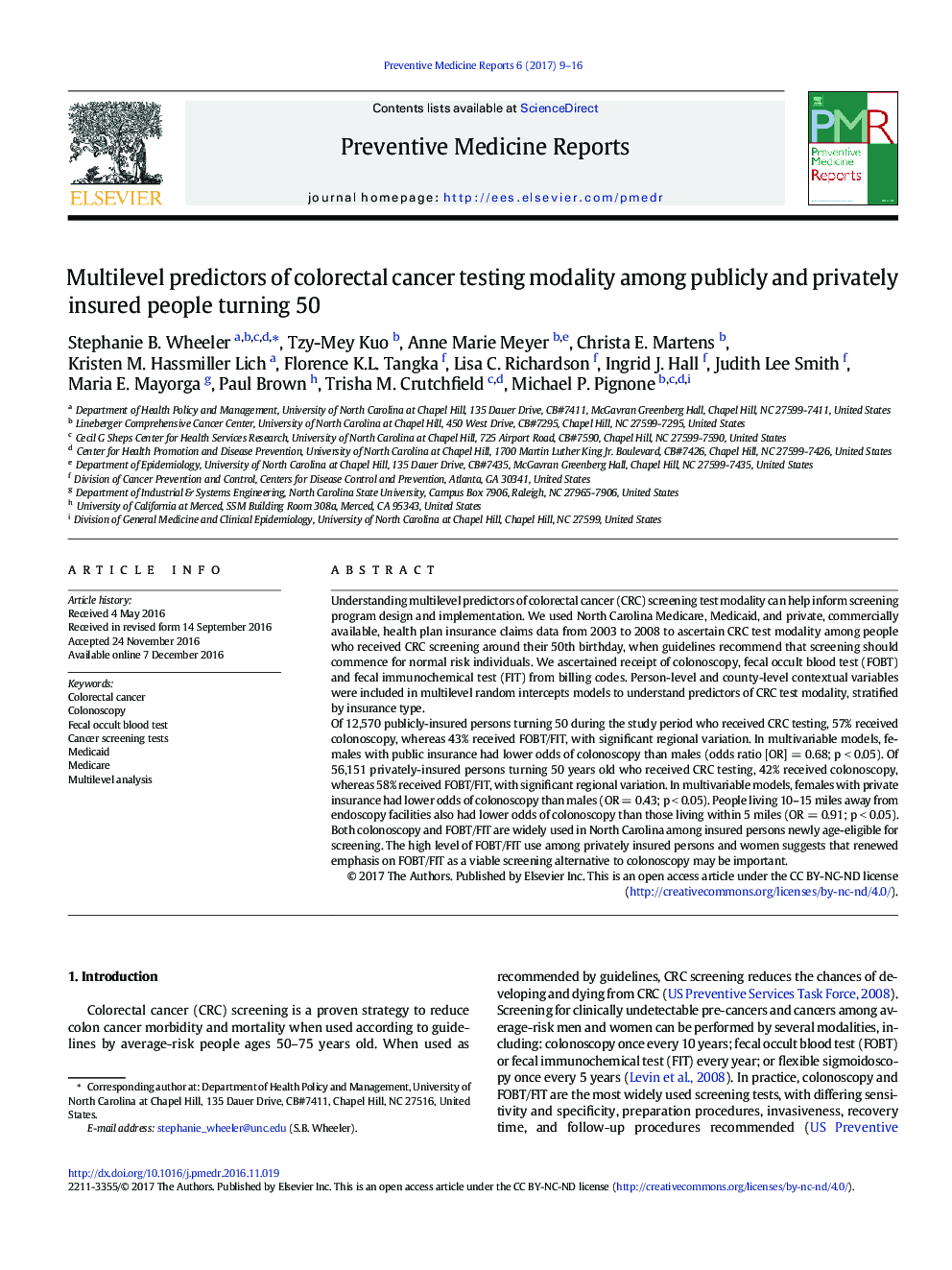| کد مقاله | کد نشریه | سال انتشار | مقاله انگلیسی | نسخه تمام متن |
|---|---|---|---|---|
| 5723636 | 1609086 | 2017 | 8 صفحه PDF | دانلود رایگان |
- Claims data were used to assess predictors of colorectal cancer screening modality.
- Both patient and regional characteristics were predictive of modality chosen.
- Fecal testing was associated with private insurance, being female, and longer distance to endoscopy center.
- Fecal testing represents an important, less invasive, alternative to colonoscopy.
Understanding multilevel predictors of colorectal cancer (CRC) screening test modality can help inform screening program design and implementation. We used North Carolina Medicare, Medicaid, and private, commercially available, health plan insurance claims data from 2003 to 2008 to ascertain CRC test modality among people who received CRC screening around their 50th birthday, when guidelines recommend that screening should commence for normal risk individuals. We ascertained receipt of colonoscopy, fecal occult blood test (FOBT) and fecal immunochemical test (FIT) from billing codes. Person-level and county-level contextual variables were included in multilevel random intercepts models to understand predictors of CRC test modality, stratified by insurance type.Of 12,570 publicly-insured persons turning 50 during the study period who received CRC testing, 57% received colonoscopy, whereas 43% received FOBT/FIT, with significant regional variation. In multivariable models, females with public insurance had lower odds of colonoscopy than males (odds ratio [OR] = 0.68; p < 0.05). Of 56,151 privately-insured persons turning 50 years old who received CRC testing, 42% received colonoscopy, whereas 58% received FOBT/FIT, with significant regional variation. In multivariable models, females with private insurance had lower odds of colonoscopy than males (OR = 0.43; p < 0.05). People living 10-15 miles away from endoscopy facilities also had lower odds of colonoscopy than those living within 5 miles (OR = 0.91; p < 0.05).Both colonoscopy and FOBT/FIT are widely used in North Carolina among insured persons newly age-eligible for screening. The high level of FOBT/FIT use among privately insured persons and women suggests that renewed emphasis on FOBT/FIT as a viable screening alternative to colonoscopy may be important.
Journal: Preventive Medicine Reports - Volume 6, June 2017, Pages 9-16
